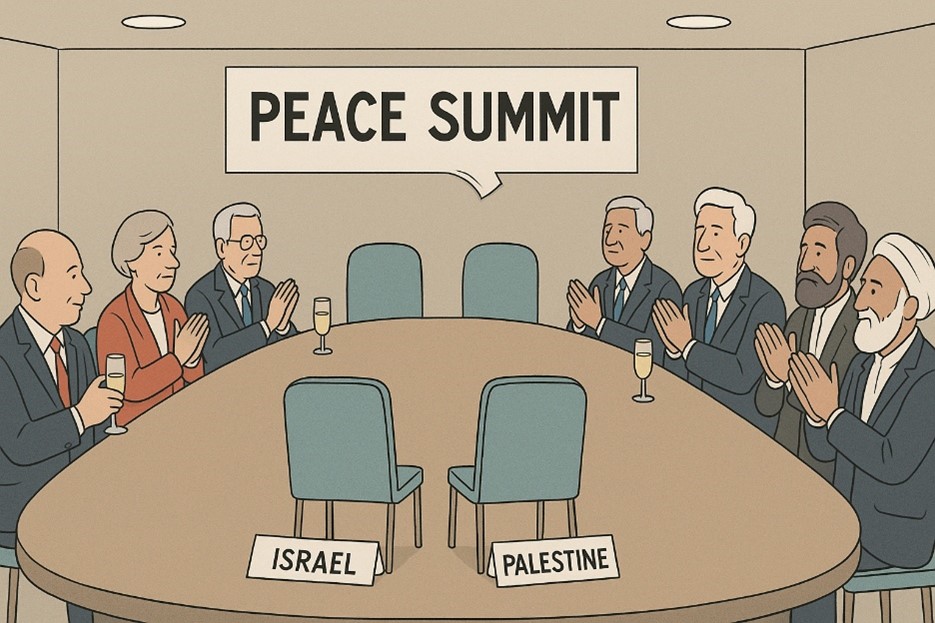



Gaza’s Truce: Applause Without Answers
By Ravishankar Kalyanasundaram
The images looked familiar.
A grand hall in Sharm el-Sheikh, leaders in suits, flags on display, applause timed to perfection.
President Trump called it a dawn of peace in the Middle East.
But the reality was harder to miss:
Israel’s Prime Minister wasn’t there. Hamas wasn’t there.
The two sides that have lived through months of war were absent from their own peace ceremony.
It was as if the world gathered to celebrate a film whose lead actors had walked off the set.
The truce that leaves the hard part untouched
The summit sounded impressive — world leaders, mediators, generous promises of aid and reconstruction.
But what was actually agreed on?
No timeline for Israel’s withdrawal from occupied territories.
No map of what Palestine would look like, or whether it would ever become a full state.
No mention of elections for either side — not in Israel, where the government survives on coalition politics and corruption charges, nor in Palestine, where political leadership is divided and dated.
The ceasefire is welcome. But peace needs more than an intermission between airstrikes.
Who cheered the loudest
Look closely at the guest list.
Most in the hall were the same powers that financed the war.
The United States, which supplies Israel’s weapons.
Qatar and Turkey, which channel funds into Gaza, some of which end up arming Hamas.
Saudi Arabia and Egypt, whose mediation keeps the balance without ever solving it.
Europe, which funds reconstruction after every conflict and then looks away until the next one.
The sponsors of destruction have become the sponsors of peace — and the applause is often for their own relief, not for the people who have lost everything.
The politics of survival
For Israel’s leadership, the conflict has been a shield.
Prime Minister Netanyahu faces corruption trials and political unrest. A prolonged war lets him stay in charge and delay accountability.
For Hamas, the war ensures relevance.
Without governing responsibility or elections, it thrives on the image of resistance.
Both sides, in different ways, need the fight to survive politically — and that makes peace inconvenient.
The missing questions
If this is peace, what happens next?
Who governs Gaza when the rubble clears?
Will there be an independent Palestine, or just a smaller Gaza fenced by new promises?
And who will ensure that the reconstruction money reaches homes, not militias?
The summit offered no answers, only optimism. But optimism without structure has rarely built nations.
The world’s selective memory
Every few years, a similar event takes place.
A war ends, a summit is held, funds are pledged, and leaders shake hands for the cameras.
Then the world moves on.
Until the next cycle begins.
We call this diplomacy, but it has become more like maintenance — keeping the conflict alive at a manageable temperature.
What peace should really mean
Real peace needs three things the cameras never show:
land, leadership, and legitimacy.
Land that people can live on without occupation.
Leadership that is accountable to its citizens, not its sponsors.
And legitimacy that comes from elections, not arms or alliances.
Until these exist, what we are watching is not a peace process but a management process — where each actor claims credit for calming the storm they helped create.
A thought to carry forward
When the world raises a toast to “Gaza Peace,” remember who’s clapping.
Most of them helped light the fire.
The people who live with its ashes are not in that room.
Peace will not come from the summit table.
It will begin the day the people of Israel and Palestine are allowed to speak for themselves — without their leaders, their sponsors, or their stage managers.